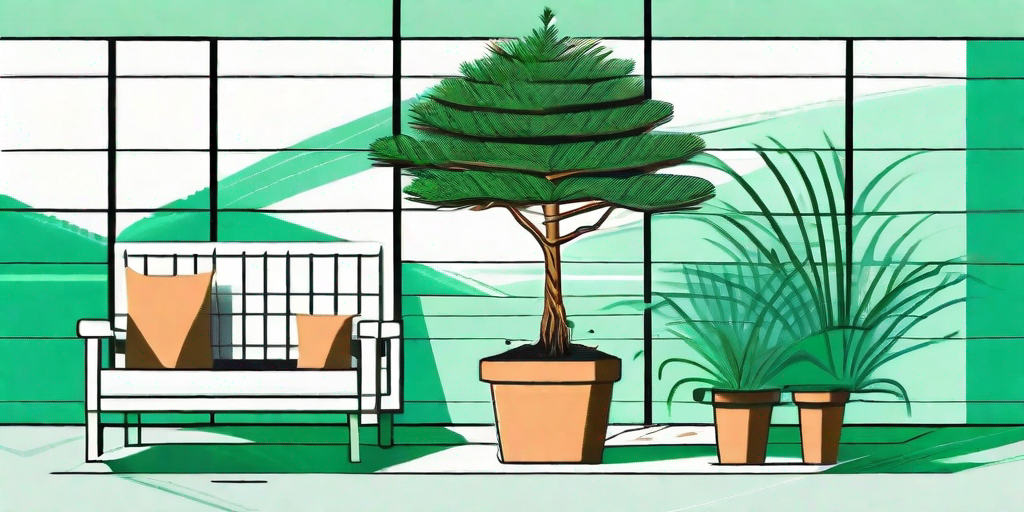
Oh, the Norfolk Pine! A tree that's as majestic as it is misunderstood. With its lush, evergreen foliage and symmetrical branches, it's a sight to behold. But, like a diva, it demands attention and care. So, buckle up, plant enthusiasts, because we're about to embark on a journey into the world of Norfolk Pine care.
Understanding Your Norfolk Pine
First things first, let's get to know our green friend a little better. The Norfolk Pine, or Araucaria heterophylla, is not actually a pine at all. It's a tropical plant native to Norfolk Island, a tiny island in the Pacific Ocean. In its natural habitat, it can grow up to 200 feet tall. But don't worry, in your living room, it will probably max out at around 6 feet.
Despite its tropical origins, the Norfolk Pine doesn't like to be too hot or too cold. It prefers a Goldilocks-esque environment: not too hot, not too cold, but just right. That means it's happiest in temperatures between 65 and 75 degrees Fahrenheit.
The Importance of Light
Like most plants, the Norfolk Pine loves light. But it's a bit of a Goldilocks when it comes to sunlight, too. Too much direct sunlight can scorch its delicate needles, while too little light can cause it to become leggy and sparse. The sweet spot? Bright, indirect light. So, place your Norfolk Pine near a north or east-facing window, and it should be as happy as a clam.
One thing to note is that the Norfolk Pine doesn't like to be moved around too much. Once you've found a spot with the right light conditions, try to keep it there. Constantly moving your plant can cause it to drop its lower branches, and nobody wants a balding Norfolk Pine.
Feeding Your Norfolk Pine
Now that we've covered the basics of Norfolk Pine care, let's talk about feeding. After all, a well-fed Norfolk Pine is a happy Norfolk Pine. But what does a Norfolk Pine eat, you ask? Well, it's not pizza and ice cream, unfortunately.
Norfolk Pines thrive on a diet of well-balanced, water-soluble fertilizer. Look for a fertilizer that has equal parts nitrogen, phosphorus, and potassium. These are the three primary nutrients that plants need to grow and thrive.
When to Feed
The best time to feed your Norfolk Pine is during the growing season, which is typically from spring to early fall. During this time, you should feed your plant every two to four weeks. In the winter, when the plant's growth slows down, you can cut back on feeding.
Remember, over-fertilizing can be just as harmful as under-fertilizing. Too much fertilizer can cause the tips of your Norfolk Pine's needles to turn brown and die. So, when it comes to feeding your plant, remember the old adage: less is more.
Watering and Humidity
Watering is another crucial aspect of Norfolk Pine care. These plants prefer their soil to be consistently moist, but not waterlogged. To achieve this, water your plant thoroughly, then let the top inch of soil dry out before watering again.
Humidity is also important for Norfolk Pines. They love a humid environment, so consider placing a tray of water near your plant or using a humidifier. Just be sure not to mist your plant, as this can lead to fungal diseases.
FAQs
Why are the tips of my Norfolk Pine turning brown?
Brown tips can be a sign of several issues, including over-fertilizing, under-watering, or low humidity. Check your plant care routine and adjust as necessary.
Can I prune my Norfolk Pine?
Yes, you can prune your Norfolk Pine to maintain its shape. However, be aware that any branches you cut off will not grow back.
Is the Norfolk Pine toxic to pets?
Good news for pet owners: the Norfolk Pine is not toxic to cats or dogs. However, it's always a good idea to keep plants out of reach of curious pets.
Conclusion
And there you have it, folks! The secret to lush and healthy Norfolk Pine foliage is a combination of the right light, feeding, watering, and humidity conditions. With a little bit of care and attention, your Norfolk Pine can thrive and become a stunning centerpiece in your home.
So, go forth and feed your Norfolk Pine! And remember, plant care is a journey, not a destination. Happy growing!















